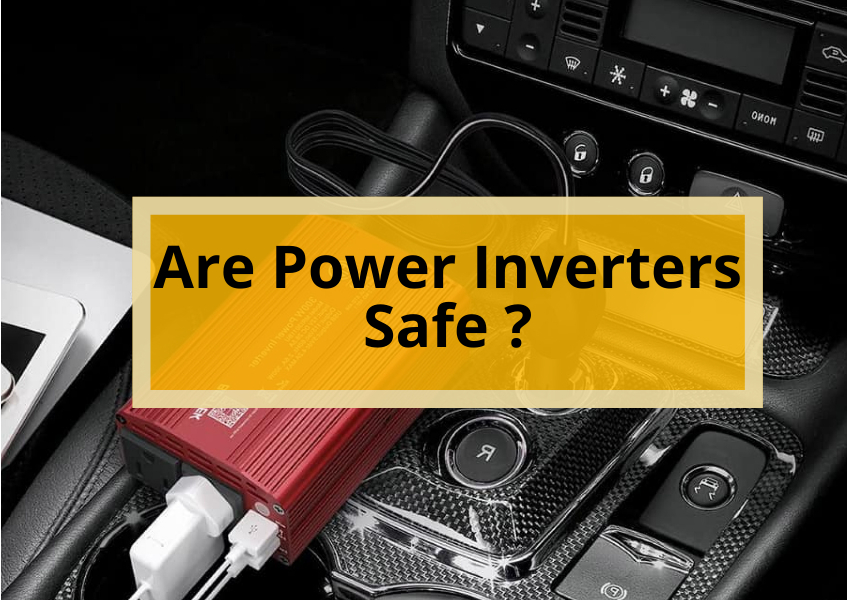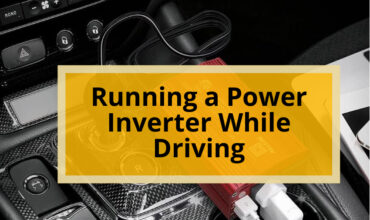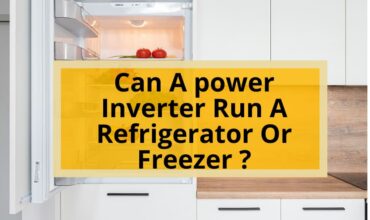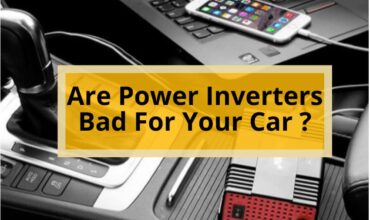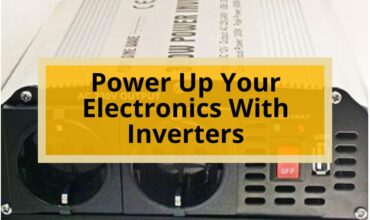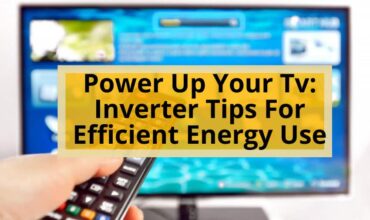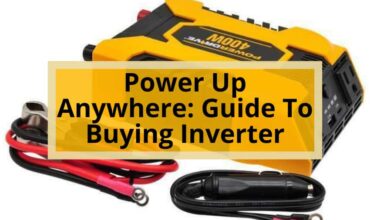Power inverters are devices that convert direct current (DC) power from sources like batteries or solar panels into alternating current (AC) power that can be used to run electronics, appliances, and tools.
While extremely useful, some people have concerns about whether power inverters are actually safe to use. This comprehensive guide will examine the safety considerations of using power inverters so you can use them properly and avoid potential hazards.
How Power Inverters Work
To understand whether power inverters are safe, it helps to first understand what they do and how they work. A power inverter takes DC electricity from a battery or other DC source and converts it into AC electricity using electronic circuitry. This allows you to plug in and use AC electronics and appliances when an AC wall outlet is not available.
The conversion process involves using transistors to rapidly switch the DC power on and off, creating a sine wave pattern that mimics the oscillating current of AC power. The transistors are controlled by circuitry that determines the necessary output voltage and frequency. Most consumer inverters output 120V AC at 60 Hz, which is the standard for household electricity in North America.
Also read : Choosing The Right Inverter For Your Home
Some key advantages of power inverters include:
- Portability – They can make AC power available anywhere you have a DC source like a car battery or solar panel system.
- Reliability – They allow you to use backup power from batteries or generators during outages.
- Convenience – They allow you to operate AC devices without a wall outlet present.
Safety Features of Inverters
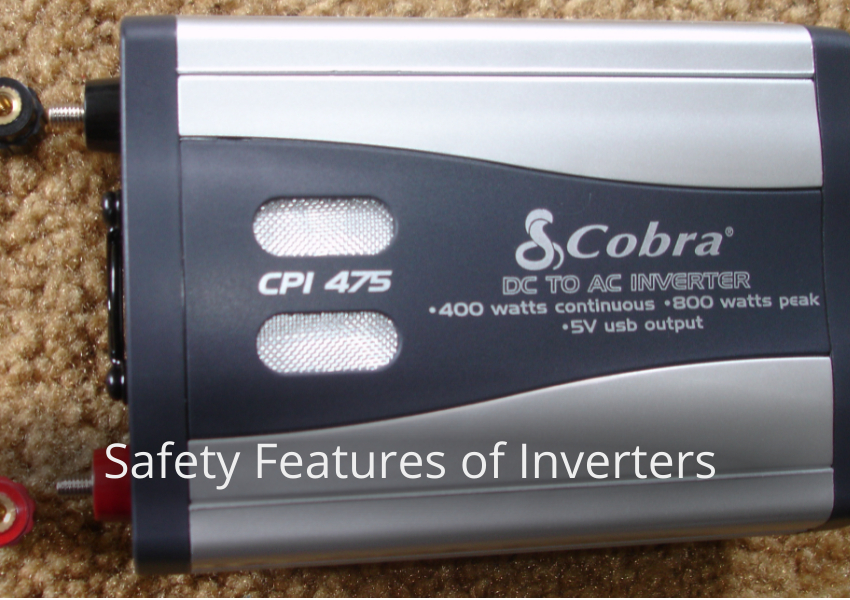
Reputable inverter manufacturers build in a variety of safety features to prevent hazards and make the devices safe when used properly:
- Overload Protection – Prevents too much load being put on the inverter to avoid overheating or failure. The inverter will shut off if overloaded.
- Low Voltage Protection – Prevents the inverter from draining the battery excessively. It will shut off if the DC voltage drops too low.
- Thermal Protection – Operates a cooling fan and/or shuts off if the inverter overheats due to high loads. Prevents fire risks.
- Isolation – The AC output voltage is electrically isolated from the DC input for safety.
- Fuses – Input and output fuses safely interrupt power flow if electrical faults are detected.
- Safety Certifications – Reputable inverters are ETL, CE, or UL certified for electrical safety.
Following good practices is key to using them safely:
- Use the Right Size Inverter – Make sure it is rated for the load you intend to power. Undersized units can overheat. Oversized units waste power when unloaded.
- Maintain Adequate Ventilation – Don’t cover or enclose inverters as they need air circulation to stay cool.
- Keep It Dry – Do not expose to rain or moisture which can cause electrical hazards.
- Use Properly Sized Cables – Thicker cables are safer as they prevent voltage drops over long runs. Observe cable ratings.
- Isolate the Battery – Disconnect your inverter when not in use to avoid passive battery drain.
- Regularly Inspect Cables and Connections – Replace any worn or damaged cables and maintain tight connections.
- Don’t Overload – Stay within the wattage rating of your inverter and cycle heavier loads off periodically.
- Use Proper Grounding – Always ground your inverter system and connected appliances appropriately.
- Adhere to Safety Switches and Breakers – Do not bypass or override any safety mechanisms.
- Keep Out of Reach of Children – Inverters pose obvious electrical hazards for unsupervised children.
With proper use and care, power inverters are perfectly safe devices. But ignoring the safety best practices can place you, your family, your property, and your inverter at risk. Always read the full owner’s manual and follow all instructions from the manufacturer.
Also read : The Perfect Inverter Size For Your Tv
Potential Dangers and Hazards
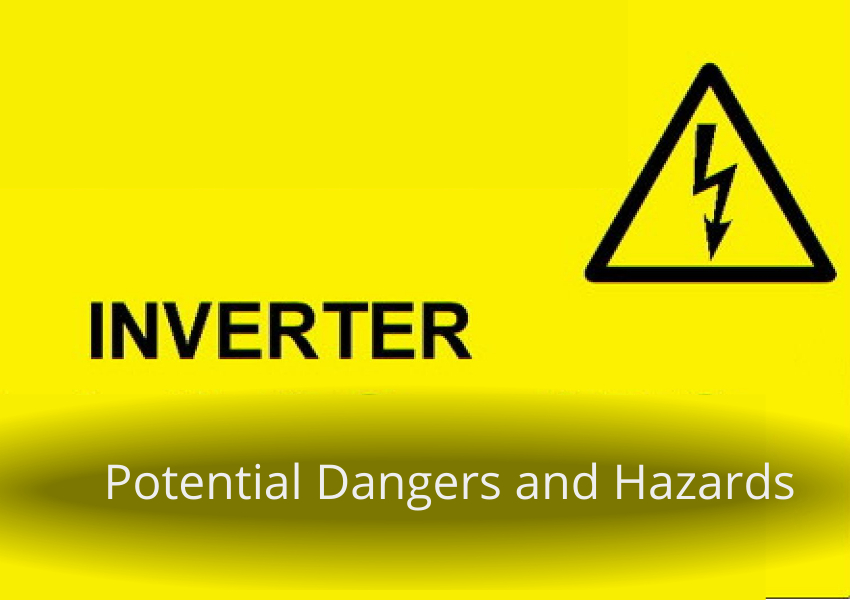
While power inverters incorporate safety features, there are still some potential hazards to be aware of, especially if the inverter is used improperly or carelessly:
- Electric Shocks – Inverters produce potentially hazardous AC voltages, especially at higher wattages. Improper grounding or faulty wiring can result in shocks.
- Fire Risk – Overheating, sparks, and fire are possible if inverters are overloaded, improperly ventilated, or installed with undersized wiring.
- Explosion – Extreme overheating of the battery connected to the inverter can in rare cases cause an explosion.
- Equipment Damage – Anything connected to the inverter can be damaged if the inverter fails or outputs unexpected voltage spikes or surges.
- Battery Hazards – Batteries may leak dangerous acids or outgas explosive fumes if damaged or overcharged by a connected inverter.
Safety Precautions When Using Power Inverters
Here are some key safety precautions you should take when using a power inverter:
- Carefully size your inverter for your intended loads and do not exceed its ratings.
- Ensure proper ventilation around the inverter to prevent overheating.
- Always use adequately sized wiring that meets voltage and amperage ratings.
- Only connect grounded, 3-prong plugs into the inverter AC outlets.
- Use a GFCI outlet or breaker on the AC output for leakage protection.
- Frequently check for warm cables and loose connections.
- Do not use near flammable materials or in high-moisture areas.
- Keep your battery properly maintained and watch for swelling or leaks.
- Make sure appliances and tools are in good repair before using with the inverter.
- Use surge protectors on electronics to protect from voltage spikes.
- Educate children about electrical safety and supervise them around inverters.
Additional safety tips for using power inverters in specific situations
- In a car:
- Avoid using the inverter while the car is parked, as this could drain the battery.
- If you must use the inverter while the car is parked, run the engine to keep the battery charged.
- Be careful not to overload the inverter, as this could damage the electrical system of the car.
- In a boat:
- Make sure the inverter is properly secured to the boat to prevent it from moving around and becoming damaged.
- Avoid using the inverter in wet or humid conditions, as this could increase the risk of electrical shock.
- In an RV:
- Make sure the inverter is properly connected to the RV’s electrical system.
- Be careful not to overload the inverter, as this could damage the electrical system of the RV.
If you have any concerns about the safety of using a power inverter, please consult the manufacturer’s instructions or contact a qualified electrician.
Also read : Choosing The Right Inverter: Powering Your Appliances Safely
Choosing a Safe Power Inverter
- When selecting an inverter, choose a reliable brand from a reputable manufacturer that builds in adequate safety protections and certifies their products to applicable standards.
- Read reviews online and look for:
- Adequate wattage and voltage for your loads
- Automatic overload shutoff
- Input and output circuit protection
- Thermal and cooling protections
- Safety certifications (UL, ETL, CE)
- Warranty on workmanship (at least 1-2 years)
- Avoid cheap or generic inverters that lack adequate safety mechanisms, overload capacity, or surge/spike protection. Paying more for a quality inverter from a trusted brand is worthwhile for safety.
Common power inverter safety myths
There are a few common myths about the safety of power inverters. Here are a few of the most common ones:
- Myth: Power inverters are dangerous because they produce high voltages of electricity.
- Fact: Power inverters can produce high voltages of electricity, but they are designed to be safe to use when used properly. It is important to always follow the manufacturer’s instructions and to avoid touching any exposed wires or terminals.
- Myth: Power inverters can cause fires.
- Fact: Power inverters can generate heat, but they are not inherently dangerous. It is important to place the inverter in a well-ventilated area and to avoid placing it on flammable materials.
- Myth: Power inverters can damage your car battery.
- Fact: Power inverters can draw power from your battery, but they will not damage it if used properly. It is important to be aware of the power draw of the devices you are powering and to avoid draining your battery.
FAQ
How do I know if my inverter cables are the right size?
Consult your inverter manual for recommended cable sizes. Thicker cables safely handle higher amperages over longer distances. Undersized cables can overheat.
How often should I inspect my inverter and wiring?
Visually inspect connections, cables, and the inverter unit itself on a regular basis for any signs of wear, damage, or overheating. Address any issues immediately.
Is it safe to plug my electronics directly into a power inverter?
Use a surge protector between your electronics and the inverter to prevent damage from voltage spikes. Some voltage fluctuation is normal.
What size inverter do I need for safety?
Size your inverter 25-30% above the total wattages of devices you plan to run to prevent overloading. Undersizing can lead to overheating hazards.
Conclusion
Power inverters provide invaluable DC to AC power conversion when you need to run AC devices from batteries, vehicles, generators and solar systems. While very useful, they must be selected, installed and used with safety in mind and proper precautions taken to avoid potential electrical hazards. Provided you adhere to the safety best practices outlined here and use a quality inverter suited to your loads, power inverters can be used quite safely. Just take the time to understand how to properly size, install, use, and maintain your inverter system.
